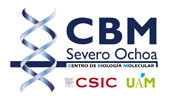Pathogenic mechanisms of Alzheimer’s disease
Physiological and pathological processes
Prof. Mª Jesús Bullido Gómez-Heras. Profesora Titular. Departamento de Biología Molecular. UAM.
We continue the study of mechanisms mediating the neurodegenerative cascade leading to Alzheimer’s disease (AD) in neuronal cell models. Based on previous results of degeneration induced by herpes simplex 1 virus (HSV-1), we are focused on the endo-lysosomal pathway and cholesterol metabolism as major functions mediating HSV-1 induced, AD-like neurodegeneration.
To expand the screening of these pathways, we have recently started to develop 2D and 3D neural models derived from the human progenitors LUHMES and ReN cell lines. We have been able to obtain different neural types (oligodendrocytes, astrocytes and neurons), and proved the ability of both progenitors and differentiated cells to resemble an AD-like phenotype that includes intracellular accumulation of Aβ and hyperphosphorylated tau, inhibition of Aβ secretion, alterations in autophagy-lysosomal pathway and changes in cholesterol levels, following HSV-1 infection. These preliminary results pave the way for the development of interesting research platforms, in which we plan to validate candidate genes like LAMP2 and MMP14 and to deepen our knowledge about the link between cholesterol and lysosome alterations and the AD like neurodegeneration induced by HSV-1.
To evaluate the translational potential of findings obtained in the models, we are analyzing genes and biomarkers in samples of controls and AD patients at dementia and pre-dementia stages. Putting together the urgent need of peripheral biomarkers and the widely supported involvement of the immune system in AD, we have selected peripheral blood mononuclear cells (PBMCs) as the material to be screened. Measurement of PBMC free cholesterol levels in two independent case-control samples totaling 480 participants revealed decreased cholesterol content in patients from early, pre-dementia disease stages, as well as in control subjects bearing the APOE4 allele. We also detected increased CD16+ and decreased CD8+ cell percentages in patients with moderate or severe dementia. These results support the presence of changes in peripheral blood cells of AD patients and suggest that alterations of cholesterol metabolism in these cells could be prodromal events. In addition, they suggest a relationship between APOE genotype and cholesterol levels in PBMC, which could manifest even in healthy individuals and perhaps partly explain the involvement of APOE4 in AD.
Therefore, our studies in cell models and patients continues supporting that failures of lysosomal function and cholesterol homeostasis are relevant in neurodegeneration, with the candidates under study having the potential to be early biomarkers or pharmacological targets for AD.


